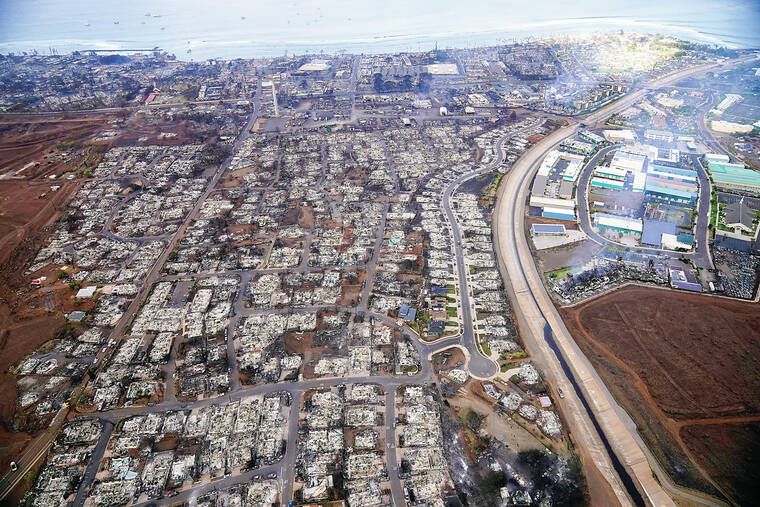Flash drought, invasive grasses, winds, hurricane and climate change fuel Maui’s devastating fires
Hawaii went from lush to bone dry and thus more fire-prone in a matter of just a few weeks — a key factor in a dangerous mix of conditions appear to have combined to make the wildfires blazing a path of destruction in Hawaii particularly damaging.
Experts say climate change is increasing the likelihood of these flash droughts as well as other extreme weather events like what’s playing out on the island of Maui, where dozens of people have been killed and a historic tourist town was devastated.
ADVERTISING
“It’s leading to these unpredictable or unforeseen combinations that we’re seeing right now and that are fueling this extreme fire weather,” said Kelsey Copes-Gerbitz, a postdoctoral researcher at the University of British Columbia’s faculty of forestry. “What these … catastrophic wildfire disasters are revealing is that nowhere is immune to the issue.”
Here’s a look at the Maui fires, and what’s behind them:
Flash droughts
Flash droughts are so dry and hot that the air literally sucks moisture out of the ground and plants in a vicious cycle of hotter-and-drier that often leads to wildfires. And Hawaii’s situation is a textbook case, two scientists told The Associated Press.
As of May 23, none of Maui was unusually dry; by the following week it was more than half abnormally dry. By June 13 it was two-thirds either abnormally dry or in moderate drought. And this week about 83% of the island is either abnormally dry or in moderate or severe drought, according to the U.S. drought monitor.
Maui experienced a two-category increase in drought severity in just three weeks from May to June, with that rapid intensification fitting the definition of a flash drought, said Jason Otkin, an atmospheric scientist at the University of Wisconsin, Madison.
Otkin co-authored an April study that shows that flash droughts are becoming more common as Earth warms by human-caused climate change. A 2016 flash drought was connected to unusual wildfires in Gatlinburg, Tennessee, he said.
Even in the past week there’s been “a quick acceleration” of that drought, said University of Virginia hydrologist Venkat Lakshmi. Flash droughts occur when the rain stops and it gets so hot that the atmosphere literally sucks moisture out of the ground and plants, making them more likely to catch fire.
“Plants are getting really, really dry,” Lakshmi said. “It’s all related to water in some ways.”
“The most destructive fires usually occur during drought. If an area falls into drought quickly, that means there is a longer window of time for fires to occur,” Otkin said. “The risk for destructive fires could increase in the future if flash droughts become more common, as some studies have indicated.”
Invasive grasses
Elizabeth Pickett is the co-executive director of the Hawaii Wildfire Management Organization, a nonprofit that works with communities across Hawaii on wildfire prevention and mitigation. Pickett said there used to be massive tracts of land occupied by irrigated pineapples and sugar cane, and as those businesses declined and ceased, the lands were taken over by invasive, fire-prone grass species.
“The problem is at such a large scale, 26% of our state is now invaded by these grasses,” she said Thursday. “The landscape that has been invaded is steep, rocky and challenging to access. It’s a really hard landscape. You can’t just go with a lawn mower.”
When these grasses burn, they burn into the native forests, threatening endangered species, and then the forests are replaced by more grass, Pickett said.





